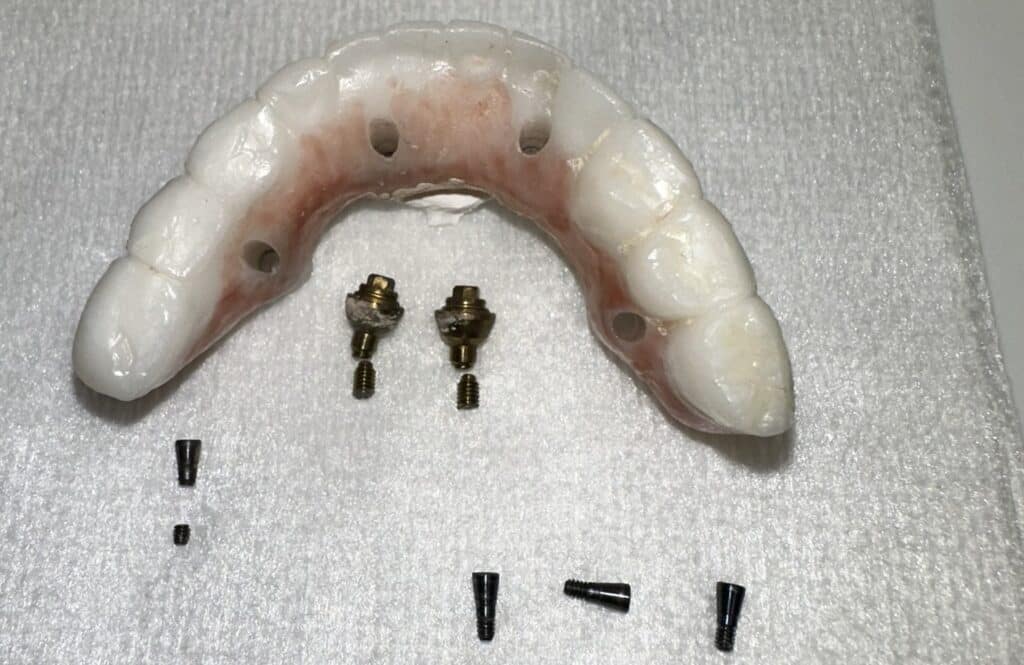
Most doctors that perform ALL-ON-X and/or ALL-ON-4 use the best products available, intending to last a lifetime, but failure to return for maintenance every 4-6 months is like jumping on the Titanic and hoping it all works out. At each maintenance visit, we closely examine the health of your bridge, gums, and bone and their direct interaction with the implant. Only after comparing the results against your previous appointment can we give you feedback and specific instructions.
What I have seen too many times is that patients love their new teeth, and they unfortunately get distracted by life. The feeling that everything is fine until a sudden shift occurs is a common pitfall. Like the iceberg that is out of site, patients overlook the all-too-subtle bridge loosening, leading to broken screws or even catastrophic broken bridges. The most common thing seen is increased inflammation and redness due to slow bacteria accumulation. Patients may even be brushing and waterpiking daily but not doing it correctly. The unfortunate result is always bone loss, leading to exposed implant threads, worsening the problem because exposed implant threads are exponentially more challenging to keep clean due to the rough surface intended to integrate with the bone.
Intervention is possible but most often requires expensive and painful surgery to stop the worsening bone loss. Still, even the most skilled doctors cannot undo the damage that has occurred. If there isn’t an intervention, the lost bone will leave the implant unsupported, causing implant failure and bridge failure. This leaves the patient without teeth and back to the original problem.

